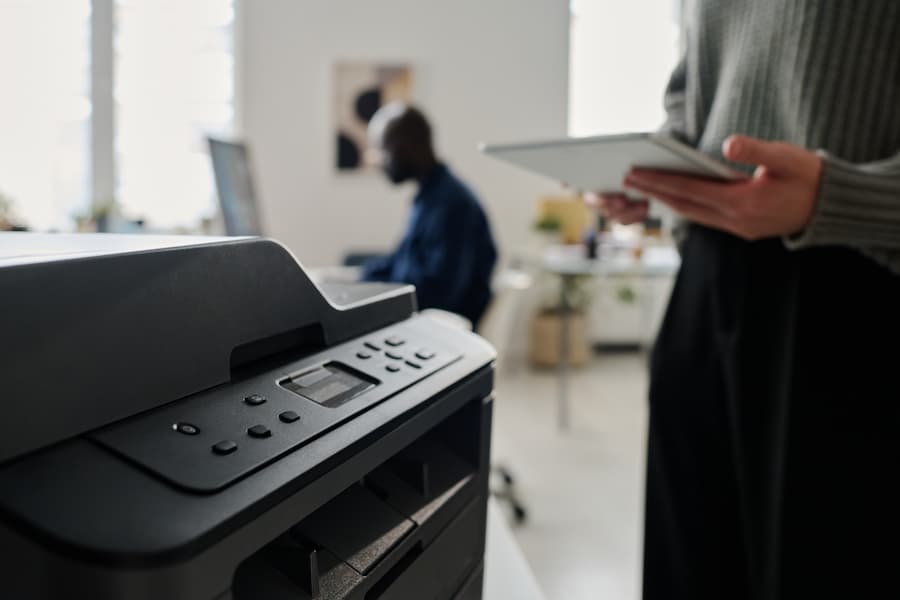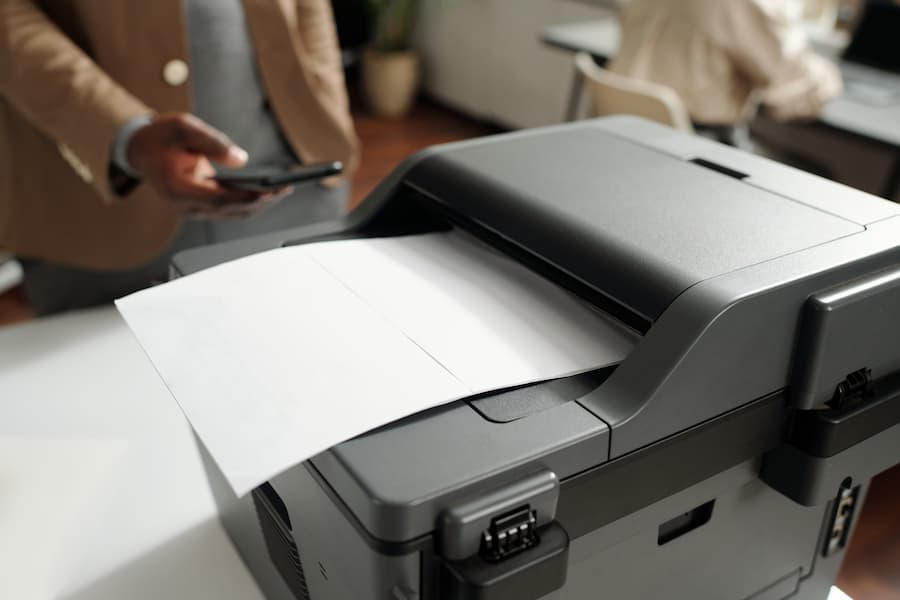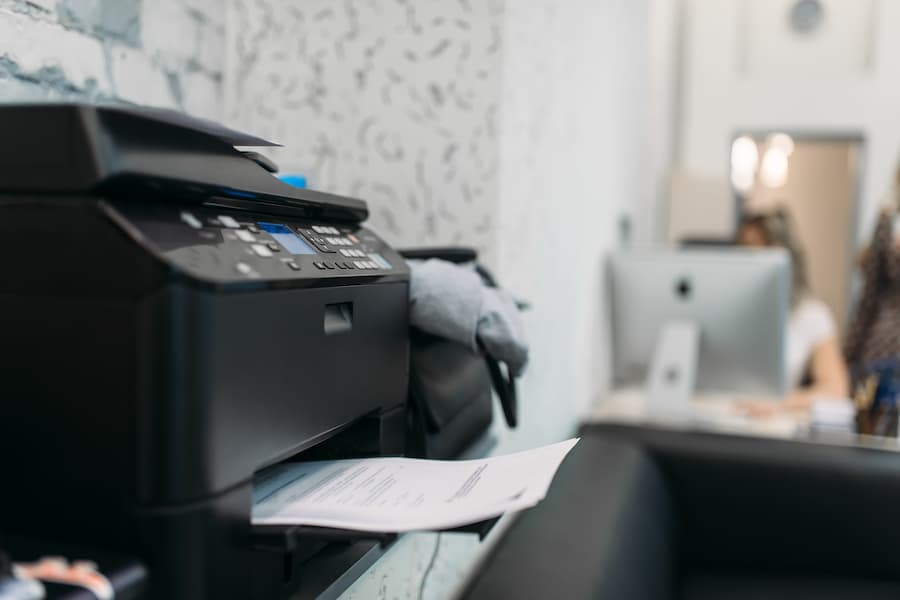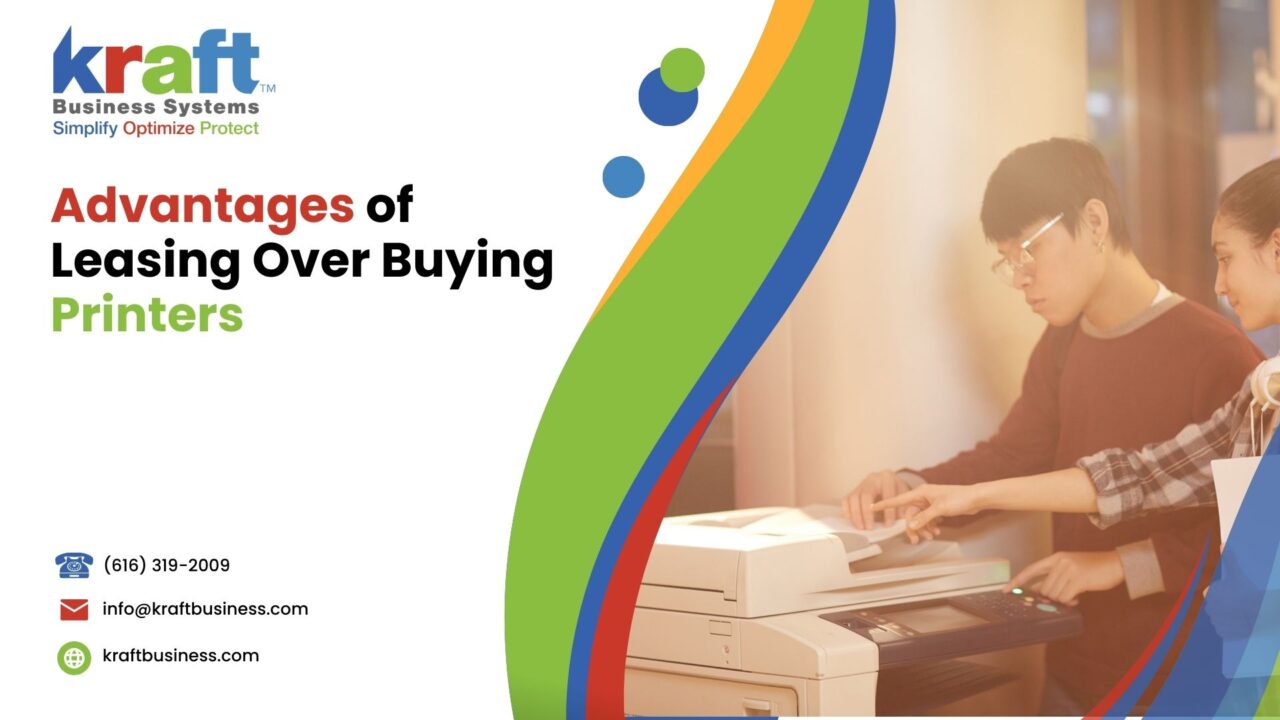Leasing Over Buying Printers
Having reliable and efficient office equipment such as printers and copiers is crucial for smooth operations. These devices play a significant role in daily tasks, from printing important documents to making copies for meetings. However, businesses often face a crucial decision: whether to lease or buy these essential pieces of equipment.
This article aims to provide detailed insights into why leasing might be a better option than buying, considering various factors such as costs, technology, and business needs.
Printer Lease vs. Purchase: Which is Best for Your Business?
Understanding Leasing a Printer
Leasing a printer involves entering into an agreement with a leasing company to use their equipment for a specified period in exchange for regular payments. This arrangement allows businesses to utilize the latest printing technology without the burden of high upfront costs.

The lease agreement outlines the terms, including the lease period, payment schedule, and maintenance responsibilities. Leasing can be an attractive option for businesses that want to conserve capital and maintain flexibility in their operations.
Pros and Cons of Leasing a Printer
Leasing offers several advantages that can be particularly beneficial for businesses. One of the primary benefits is the lower upfront cost. Instead of making a significant capital investment in purchasing a printer, businesses can spread out the cost over the lease term. This can be especially advantageous for small businesses or startups with limited budgets. Additionally, leasing provides access to the latest technology. Leasing companies often offer the most up-to-date models, ensuring that businesses have the best equipment available without the need for frequent purchases.
Another advantage of leasing is the flexibility it offers in terms of upgrades. As technology evolves, businesses can easily upgrade their equipment at the end of the lease term, ensuring they always have access to the latest advancements. Furthermore, maintenance and service are typically included in the lease agreement, reducing the hassle and cost of repairs. Leasing can also offer tax benefits, as lease payments can often be deducted as business expenses.
However, there are also disadvantages to consider. While the initial costs are lower, the long-term cost of leasing can be higher than buying. Businesses need to carefully review lease contracts and terms to avoid any unfavorable conditions. Additionally, at the end of the lease, businesses do not own the equipment and must either return it or negotiate a purchase.
Pros and Cons of Buying a Office Printer
Buying a printer has its own set of advantages and disadvantages. One of the main benefits is ownership. When a business buys a printer, it becomes an asset that can be used without any contractual obligations. This can be particularly advantageous for businesses that prefer to own their equipment outright. Additionally, there are no ongoing monthly payments, which can simplify budgeting and financial planning.
However, buying a printer comes with a high upfront cost. This can be a significant expense, especially for high-end or multifunction printers. Over time, the equipment will depreciate and may become obsolete, requiring further investment in new technology. Maintenance and repair costs are also the responsibility of the owner, which can add to the overall expense.
Leasing vs. Buying: Cost Comparison
When comparing the costs of leasing and buying, it is essential to consider both the short-term and long-term financial implications. Leasing typically involves lower initial costs, making it more accessible for businesses with limited capital. The regular payments can be easier to manage within a monthly budget. However, the cumulative cost of leasing over several years can exceed the purchase price of a printer.
Buying a printer requires a significant upfront investment, which can strain the budget, but it eliminates ongoing payments. Over time, owning a printer can be more cost-effective, especially if the equipment is well-maintained and has a long lifespan. Businesses need to conduct a detailed cost analysis to determine which option is more financially viable in the long run.
Business Needs and Leasing
When deciding whether to lease or buy a printer, businesses must assess their specific needs and circumstances. The size of the business, printing volume, and frequency of use are critical factors to consider. For example, a large enterprise with high-volume printing needs may find leasing more advantageous due to the regular access to updated technology and maintenance services. On the other hand, a small business with lower printing requirements might benefit more from purchasing a printer.
Budget constraints also play a significant role in this decision. Leasing can provide a way to conserve capital and allocate resources to other areas of the business. Additionally, businesses that require flexibility and scalability may prefer leasing, as it allows for easier upgrades and adjustments to the equipment as needs change.
Leasing a Copier or Office Printer: Key Considerations
Types of Leasing Options
There are two primary types of leasing options: operating leases and capital leases. Operating leases are short-term agreements with lower monthly payments, designed for businesses that do not intend to keep the equipment at the end of the lease. These leases are more like rentals, providing flexibility without the commitment of ownership.
Capital leases, on the other hand, are long-term agreements with higher monthly payments. They often include an option to purchase the equipment at the end of the lease term. This type of lease is suitable for businesses that eventually want to own the equipment but prefer to spread out the cost over time.
Key Terms in Lease Agreements
Understanding the key terms in lease agreements is crucial for making an informed decision. Lease contracts typically specify the lease period, which can range from a few months to several years. Payment terms outline the amount and frequency of payments, and maintenance and service clauses detail the responsibilities for repairs and upkeep. End-of-lease options may include returning the equipment, extending the lease, or purchasing the equipment at a predetermined price.
Choosing the Right Leasing Company
Selecting the right leasing company is essential for a smooth leasing experience. Businesses should consider the reputation and reliability of the leasing company, as well as the range of services and support they offer. Flexibility in terms and conditions, customer reviews, and testimonials can also provide valuable insights.
A reputable leasing company will offer transparent agreements and responsive customer service to address any issues that may arise during the lease term.
The Process of Lease Printer or Copier
The process of leasing a printer or copier involves several steps. First, businesses need to evaluate their specific needs, including the type and volume of printing, budget constraints, and desired features.

Next, researching various leasing companies and comparing their offerings can help identify the best options. Reviewing lease agreements in detail is crucial to ensure favorable terms and avoid hidden costs. Once the lease is finalized, the leasing company will typically handle the installation and setup of the equipment, ensuring it is ready for use.
Advantages and Disadvantages of Leasing
Advantages of Leasing Office Equipment
Leasing office equipment, such as printers and copiers, provides several distinct advantages that can be particularly beneficial for businesses of all sizes. One of the primary benefits is budget management. Leasing allows businesses to spread out the cost of the equipment over a fixed period, resulting in predictable monthly expenses. This can be especially advantageous for small businesses or startups with limited budgets, as it enables them to allocate their resources more effectively.

Another significant advantage is access to advanced technology. Leasing companies frequently update their inventory, providing businesses with the latest models and features. This ensures that businesses stay competitive by using the most up-to-date equipment without the need for frequent purchases. Regular upgrades are often included in lease agreements, allowing businesses to benefit from technological advancements without additional costs.
Maintenance and service are usually included in leasing agreements, which can save businesses both time and money. Leasing companies typically offer comprehensive service packages that cover repairs, replacements, and routine maintenance, reducing the burden on internal IT departments and ensuring minimal downtime. This aspect of leasing can be particularly beneficial for businesses that rely heavily on their printers and copiers for daily operations.
Disadvantages of Leasing Office Equipment
Despite the many advantages, leasing office equipment also has its drawbacks. One of the main disadvantages is the long-term cost. While leasing provides lower upfront costs and predictable monthly payments, the total cost over the lease term can be higher than purchasing the equipment outright. Businesses need to carefully evaluate the overall financial impact and consider whether the benefits of leasing outweigh the higher long-term costs.
Contractual obligations are another potential drawback. Lease agreements typically involve fixed-term commitments, which can range from a few months to several years. Businesses that experience significant changes in their operations or financial situation may find it challenging to adapt to these fixed terms. Additionally, early termination of a lease can result in penalties, adding to the overall cost.
Deciding Whether to Lease or Buy
When deciding whether to lease or buy office equipment, businesses must consider several factors. The financial health of the business is a critical consideration. Businesses with stable and predictable cash flow may prefer the flexibility and lower initial costs of leasing. In contrast, those with sufficient capital reserves may find purchasing more cost-effective in the long run.
Long-term business goals also play a significant role in this decision. Companies that prioritize staying current with the latest technology and minimizing maintenance responsibilities may find leasing more aligned with their objectives. On the other hand, businesses that prefer to build assets and have control over their equipment might opt for purchasing.
Industry-specific needs can also influence the decision. For instance, companies in rapidly evolving industries such as technology or media may benefit more from leasing due to the need for constant upgrades. In contrast, businesses in more stable industries might find purchasing a more practical option.
What People May Also Ask
What are the tax implications of leasing vs. buying?
Leasing payments can often be deducted as business expenses, providing potential tax benefits. In contrast, purchased equipment may be subject to depreciation, which can also offer tax advantages over time. Consulting with a tax professional can help businesses understand the specific implications for their situation.
Can leased printers be customized to specific business needs?
Yes, leased printers can often be customized to meet the unique needs of a business. Leasing companies typically offer a range of models and configurations, allowing businesses to select equipment that matches their specific requirements.
What happens at the end of a lease term?
At the end of a lease term, businesses typically have several options. They can return the equipment, extend the lease, or negotiate a purchase of the equipment at a predetermined price. The specific options available will depend on the terms of the lease agreement.
Are there options to buy the leased equipment?
Many lease agreements include an option to purchase the equipment at the end of the lease term. This can be an attractive option for businesses that wish to retain the equipment after the lease period.
How does leasing affect cash flow compared to buying?
Leasing can have a positive impact on cash flow by reducing the need for large upfront expenditures. The predictable monthly payments associated with leasing can make it easier for businesses to manage their finances and allocate resources more effectively.
Is it possible to lease refurbished printers?
Yes, many leasing companies offer refurbished printers as an option. Leasing refurbished equipment can provide additional cost savings while still delivering reliable performance.
What are the typical maintenance and service terms in a lease agreement?
Lease agreements usually include comprehensive maintenance and service terms. These can cover routine maintenance, repairs, and replacements, ensuring that the equipment remains in good working condition throughout the lease term.
Conclusion
In conclusion, leasing printers and copiers offers numerous advantages, including lower upfront costs, access to the latest technology, and included maintenance services. However, businesses must carefully weigh these benefits against the potential long-term costs and contractual obligations.
By thoroughly assessing their needs and considering the key factors outlined in this article, businesses can make an informed decision that best supports their operational and financial goals. Whether choosing to lease or buy, understanding the pros and cons of each option will help businesses optimize their office equipment strategy and enhance their overall efficiency and productivity.






